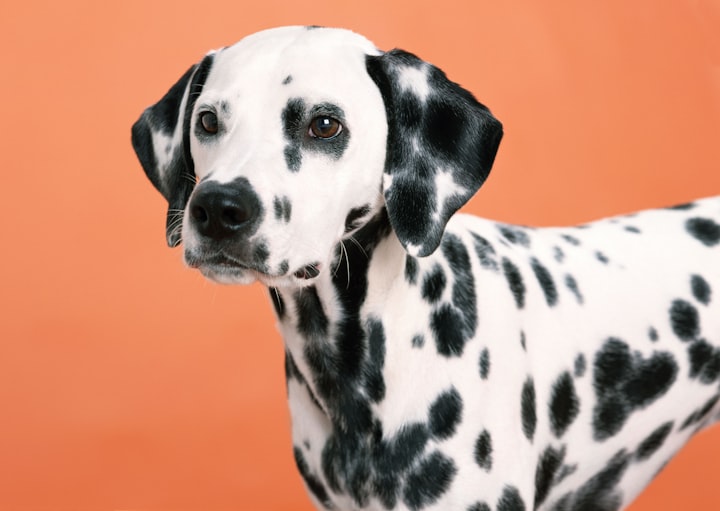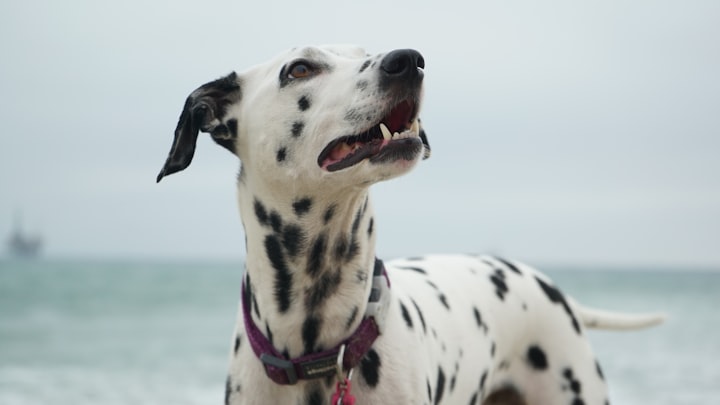Dalmatian Facts & Breed Info: Insightful Read

Hey pals! Ever wondered about Dalmatians? They're not just adorable spots on legs! Did you know they're born all white, and some rock a hipster long-haired look? Or can you believe they've become rare breeds?
Whether you're into quirky doggy traits, curious about their mysterious origins, or keen to bust some myths, let's chat about these unique furballs and explore some Dalmatian facts together.
What are the facts about Dalmatians?
1. Are Dalmatians aggressive?

Dalmatians are known to be aggressive towards strangers. Some people believe that Dalmatians are more aggressive than pit bulls. While this is sometimes true, it is not always the case. Dalmatians are typically aggressive because of poor breeding or a lack of attention and exercise.
When they are neglected or left alone for an extended period of time, they can become aggressive, destructive, and threatening.
Dalmatians are also prone to aggression if not properly trained and exercised on a daily basis.
2. Are there long-haired Dalmatian dogs?


Source: @archibald_lotaspots
Yes, long-haired Dalmatians do exist. While long-haired Dalmatians aren't as popular as short-haired Dalmatians, they do exist — and sure, these doggos are purebred.
This lengthy coat is produced by a recessive gene, meaning it can be passed down through generations. That's why two short-haired Dalmatians can have long-haired pups.
For many years, the long coat was thought to be an unfavorable characteristic of Dalmatians. Dal pups with long coats have been euthanized, the reason why they are so rare.
Happily, these Dalmatians gained popularity in 2015, so there is some hope that attitudes regarding them will shift in the coming years.
3. Dalmatians are independent

Dalmatians are incredibly intelligent creatures. Dalmatians, like many other clever dog breeds, are prone to stubbornness. But, of course, each Dalmatian is unique. Dals, in general, are difficult to train.
They want to please, yet they are also very independent. This breed has a well-deserved reputation for being manipulative. They will almost always strive to do things their way and will rarely listen. That is why early training is crucial.
4. Dals are prone to deafness

This breed is the most prone to deafness because the gene responsible for the spotted pattern can cause hearing issues.
So, if your Dal is ignoring you because it actually can't hear you. As a result of their spotted patterns, around 30% of all Dalmatians are deaf. It is possible that dogs with this coat will result in lack developed melanocytes (melanin-generating cells) in the inner ear. Without these, dogs might become completely deaf. Dogs with more black patches are less likely to be deaf.
5. Dalmatian Puppies are born all white and spotless

Puppies are born pure whitesheds, despite being covered with spots as adults. Dalmatian puppies typically do not develop their distinguishing spots until they are four weeks old.
6. 101 Dalmatians perpetuated a stigma that harmed the breed

Aside from providing audiences with a false impression of the puppies' appearance, the film inspired many people to actually buy one of the pups they saw on the big screen.
Sad to say, the Dalmatian surge resulted in a large number of Dalmatians in shelters. People with families discovered that the breed sheds significantly and would not always like being around youngsters.
The puppies require a great deal of attention and training, and many owners were unprepared for the responsibility. As a consequence, many spotted dogs were left homeless.
7. Dalmatians are versatile dogs

This breed is extremely adaptable and has been utilized for a variety of purposes over the centuries. They are skilled sporting dogs who work as birding dogs, trail hounds, boar hunters, and retrievers. Furthermore, Dals became good performers on stage and in the circus due to their great memory and attractive coats.
8. The origins are unknown

The Dalmatian's origins, like those of many other ancient breeds, remain unknown. Some say these dogs originated in Dalmatia, an area of contemporary Croatia. The dogs were war canines who served as guards. Some also say the dogs are as old as the Egyptians. Paintings of these spotted dogs running beside chariots have been discovered in tombs.
9. Not all Dalmatians hate water

Knowing that Dalmatians have never been created to be water dogs, it's surprising that the great majority of them enjoy it.
Those who enjoy swimming are likely to do so since Dalmatians are physically capable and enjoy physical activity in general.
If you and your family love water, it’s possible for your Dalmatian to love the water, too.
As you know there are many Dals that don't enjoy the water at all.
10. Why are Dalmatians known as fire dogs?

Best known as fire dogs, Dalmatians have been a part of firehouses for more than a century.
In the past, firefighters used horse-drawn carriages to reach the blaze. They chose Dalmatians as companion dogs because of their compatibility with horses. Dogs ran alongside horses, protecting them and providing them with mental comfort to cope with the stress of the fire. Having a very well-developed sense of smell, they used it to get to the scene of the fire.
Soon after 9/11, a Dalmatian puppy, named Twenty, was donated to the New York City Fire Department in memory of the seven members of Ladder 20 who died in the twin towers.
Nowadays, Dalmatians are frequently brought into schools to teach pupils and students about fire safety. Thus, Dalmatians mainly serve as mascots. We can also imagine how pleasant their company is in a firehouse, where firefighters are waiting for the next fire to save lives.
Final thoughts
So, there you have it – the lowdown on Dalmatians, those charming spots with tails attached! From their independent charm to the surprise of long-haired hipster Dals, these furballs are more than meets the eye. Whether born all-white or stealing the show in firehouses, Dalmatians are a unique blend of history, quirks, and heartwarming tales. So, next time you spot one of these four-legged legends, remember the incredible journey and versatility that lies beneath those iconic spots!




Comments ()